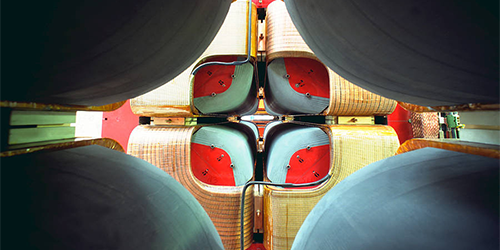Throwing Nuclei in the Ring
Certain naturally occurring isotopes of heavy elements, from selenium to mercury, are believed to originate in stellar explosions via the “p process”—a series of nuclear reactions that add one or more protons to an atomic nucleus. René Reifarth at the Goethe University Frankfurt, Germany, and colleagues have now shown that some of these proton-capture reactions can be probed in a scheme based on heavy nuclei circulating in a particle storage ring. The novel method may help researchers better understand stellar nucleosynthesis by characterizing key steps of the p process.
The p process occurs via thousands of possible nuclear reactions, but only a few of them have been studied in the lab. One of the experimental difficulties is that many of these reactions involve radioactive nuclei that decay rapidly, leaving little time to acquire data. The authors overcome this challenge by creating such reactions in a storage ring. The nuclei circulate in the ring at a controllable speed and repeatedly hit a hydrogen target, from which they may capture a proton. The key advantage of this approach is that nuclei that did not interact with the target’s protons can be recycled, increasing the chance of observing such reactions within the limited lifespan of the unstable nuclei.
The setup allowed the researchers to measure the probability of the reaction by which the ruthenium-96 isotope captures one proton and turns into the heavier rhodium-97. The method will greatly expand the range of reactions that can be investigated experimentally, providing quantitative information on the yield of the p process, for which only theoretical predictions exist.
This research is published in Physical Review C
–Matteo Rini
Correction (9 September 2015): An earlier version incorrectly stated that the reaction by which ruthenium-96 captures one proton and turns into the heavier rhodium-97 was previously inaccessible. This specific reaction has already been tested experimentally.





